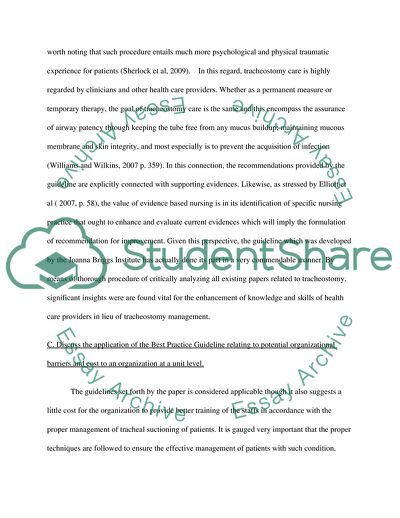Cite this document
(Methods for Detecting Evidence in Tracheostomy Research Paper, n.d.)
Methods for Detecting Evidence in Tracheostomy Research Paper. Retrieved from https://studentshare.org/medical-science/1727080-critical-reflection-and-decision-making-report-related-to-the-utilisation-of-evidence
Methods for Detecting Evidence in Tracheostomy Research Paper. Retrieved from https://studentshare.org/medical-science/1727080-critical-reflection-and-decision-making-report-related-to-the-utilisation-of-evidence
(Methods for Detecting Evidence in Tracheostomy Research Paper)
Methods for Detecting Evidence in Tracheostomy Research Paper. https://studentshare.org/medical-science/1727080-critical-reflection-and-decision-making-report-related-to-the-utilisation-of-evidence.
Methods for Detecting Evidence in Tracheostomy Research Paper. https://studentshare.org/medical-science/1727080-critical-reflection-and-decision-making-report-related-to-the-utilisation-of-evidence.
“Methods for Detecting Evidence in Tracheostomy Research Paper”, n.d. https://studentshare.org/medical-science/1727080-critical-reflection-and-decision-making-report-related-to-the-utilisation-of-evidence.


